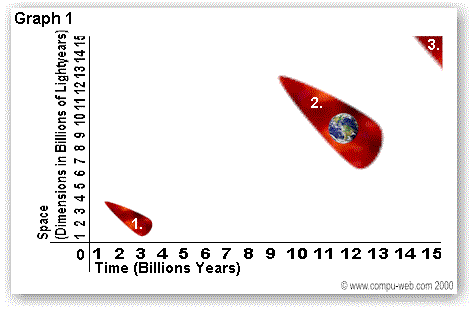The BBC unfortunately
does not keep an archive of articles more than a few months old.
Therefore the picture links and the link to the original article
leads to Nirvana. Sorry.
 A high-flying balloon which soared
over Antarctica has answered one of cosmology's greatest questions by revealing that the
universe is "flat". To astronomers, flat means that the usual rules of
geometry are observed - light travels in straight lines, not curves. But since Albert
Einstein proposed that the universe was "curved", the debate has been open.
Scientific opinion has moved towards a flat universe and the latest data confirm this with
greater certainty than ever before. Another result of the study is the prediction that the
universe will eventually stop expanding from the Big Bang, but will not collapse into a
"Big Crunch". "It's a tremendously exciting result - and one that will mean
rewriting the text books on the history of the universe," said one of the research
team, Professor Peter Ade at Queen Mary College, University of London. The new
information is an exquisitely accurate map of the very faint afterglow of heat left behind
by the Big Bang. This is called the Cosmic Microwave Background and is equivalent to the
tiny warmth given off by something just a few degrees above absolute zero, -273 degC.
A high-flying balloon which soared
over Antarctica has answered one of cosmology's greatest questions by revealing that the
universe is "flat". To astronomers, flat means that the usual rules of
geometry are observed - light travels in straight lines, not curves. But since Albert
Einstein proposed that the universe was "curved", the debate has been open.
Scientific opinion has moved towards a flat universe and the latest data confirm this with
greater certainty than ever before. Another result of the study is the prediction that the
universe will eventually stop expanding from the Big Bang, but will not collapse into a
"Big Crunch". "It's a tremendously exciting result - and one that will mean
rewriting the text books on the history of the universe," said one of the research
team, Professor Peter Ade at Queen Mary College, University of London. The new
information is an exquisitely accurate map of the very faint afterglow of heat left behind
by the Big Bang. This is called the Cosmic Microwave Background and is equivalent to the
tiny warmth given off by something just a few degrees above absolute zero, -273 degC.
Read the complete article here.
My curiosity was tickled, and I
looked at this discovery in a greater detail.
This is what is accepted about
Cosmology today:
The Universe started in a Big
Bang approximately 12 Billion years ago, and since then has been expanding.
Space-time has been expanding since and is still in the process of expansion.
The CMB (Cosmic Microwave
Background radiation) is a remnant of the Big Bang. Light photons move at the
fastest possible speed in the Universe, namely at the speed of light.
Matter does not move at
the speed of light. To accelerate any quantity of matter to the speed of
light would require all available energy in the Universe (there are formulas which prove
this).
There is now an apparent
conundrum, regarding the detection of the CMB in the early history of our Universe.

Starting from a common point
(the singularity) all matter and space came into existence 12 Billion years ago.
The photons of the CMB which
were detected by Boomerang are the oldest photons ever detected by humans. They are
almost 12 Billion years old. We can calculate their age by looking at the red-shift.
We can also tell how far away they are by looking at the redshift, also known as
the Doppler effect.
We derive thus their age, and
distance.
Graph 1 is a simple space-time
diagram. I have roughly indicated the position of the Earth (2.) and of the CMB
(1.).
The CMB in position 1. is calculated to come from a time and distance shortly after
the Big Bang. This happened 12 Billion years ago, and the graph shows where Earth is
now in position 2.
 The picture on the left shows the scale of the CMB
(Image courtesy of the BBC).
The picture on the left shows the scale of the CMB
(Image courtesy of the BBC).
There is however one little snag, which I cannot reconcile with this pretty
picture:
If the photons of the CMB
originated 12 Billion years ago, and are only reaching us now, why did it take so long for
them to reach Earth? The photons from the CMB have travelled for 12 Billion years at
the speed of light, but Earth has not travelled at the speed of light during this time.
The photons from the early
formation of the Galaxies ought to be in position 3., or even further apart from Earths
relative position; they should have long since overtaken us.
To say that the photons from a
time shortly after the Big Bang are just being now received on Earth would mean that Earth
itself must have travelled at lightspeed, in order to receive this snapshot of an early
Universe.
If you have any suggestions how
this can be, please drop me an E-mail or
discuss it on the message board.
Eric